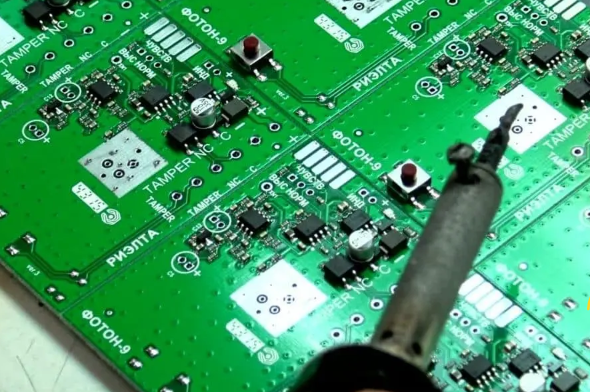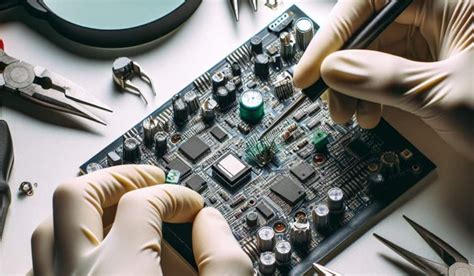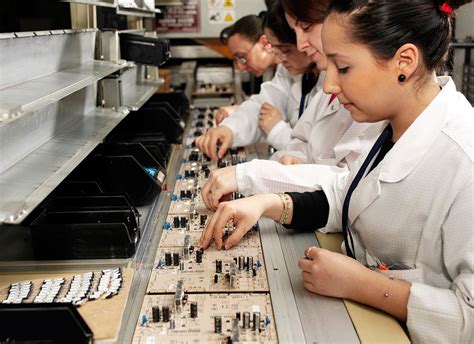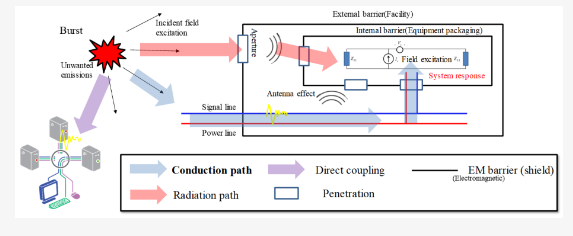The Importance of Understanding PCB Assembly and Prototype Design
Introduction
In today’s rapidly evolving technological landscape, Printed Circuit Boards (PCBs) form the backbone of nearly all electronic devices. From smartphones and laptops to medical equipment and automotive systems, PCBs enable the complex interconnections that make modern electronics possible. Understanding PCB assembly and prototype design has become increasingly crucial for engineers, designers, entrepreneurs, and even business professionals involved in product development. This comprehensive exploration will examine why knowledge of these processes is essential, how it impacts product development cycles, and what benefits it brings to various stakeholders in the electronics industry.

Fundamentals of PCB Technology
Before delving into the importance of assembly and prototyping, it’s essential to understand what PCBs are and their role in electronics. A PCB is a laminated sandwich structure of conductive and insulating layers that provides both mechanical support and electrical connections between components. The conductive pathways are etched from copper sheets laminated onto a non-conductive substrate, creating the “wiring” that connects various electronic components.
PCBs have evolved significantly since their inception in the early 20th century. Modern boards can have dozens of layers, support high-frequency signals, and incorporate advanced materials for specialized applications. This complexity makes proper design and assembly critical to the board’s functionality and the end product’s reliability.
The PCB Development Process
The journey from concept to finished PCB involves several critical stages:
- Schematic Design: Creating the electronic circuit diagram
- PCB Layout: Translating the schematic into physical board design
- Prototype Fabrication: Manufacturing initial board samples
- Assembly: Populating the board with components
- Testing and Validation: Ensuring the board functions as intended
- Production: Scaling up for mass manufacturing
Each stage requires specialized knowledge, but the prototype and assembly phases often determine a product’s success or failure. Understanding these processes helps teams make better decisions throughout development.
Why PCB Prototype Design Matters
1. Validating Design Concepts
Prototyping serves as the first physical manifestation of a design concept. It transforms theoretical schematics into tangible products that can be tested and evaluated. Without prototyping, designers might spend months developing a product only to discover fundamental flaws in the manufacturing stage.
Prototypes allow engineers to:
- Verify circuit functionality
- Test component compatibility
- Assess physical dimensions and form factors
- Identify potential manufacturing issues
- Evaluate thermal performance
2. Reducing Development Costs
While prototyping requires an initial investment, it ultimately saves money by catching problems early. The cost of fixing errors increases exponentially as a product moves through development stages. A flaw discovered during prototyping might cost hundreds of dollars to correct, while the same issue found during mass production could cost thousands or even force a product recall.
3. Accelerating Time-to-Market
In competitive industries, being first to market can determine a product’s success. Effective prototyping shortens development cycles by:
- Enabling parallel development of hardware and software
- Facilitating quick iterations based on test results
- Reducing the need for extensive redesigns later
- Allowing early user feedback incorporation
4. Supporting Innovation and Customization
Prototyping empowers designers to experiment with novel solutions and custom configurations that might be deemed too risky without physical validation. This freedom fosters innovation and enables the creation of specialized products for niche markets.

The Critical Role of PCB Assembly
1. Ensuring Product Reliability
PCB assembly transforms a bare board into a functional electronic device. The assembly process—whether done manually for prototypes or through automated systems for production—directly impacts the product’s quality and reliability. Understanding assembly helps designers:
- Select appropriate components
- Optimize board layout for manufacturability
- Specify proper soldering techniques
- Implement effective quality control measures
2. Balancing Cost and Performance
Assembly knowledge enables better decisions regarding:
- Component sourcing and alternatives
- Automation versus manual assembly
- Testing methodologies
- Packaging requirements
These decisions significantly affect both the unit cost and the performance characteristics of the final product.
3. Facilitating Design for Manufacturability (DFM)
Designers who understand assembly constraints can create boards that are easier and more cost-effective to produce. DFM principles include:
- Optimal component placement
- Appropriate pad and trace sizes
- Proper clearances for assembly tools
- Consideration of thermal management during soldering
- Accessibility for testing and rework
4. Supporting Scaling from Prototype to Production
The transition from prototype to mass production presents numerous challenges. Understanding assembly processes helps smooth this transition by:
- Identifying components that may have supply chain issues
- Anticipating automation requirements
- Planning for quality control at scale
- Addressing potential yield problems
Cross-Functional Benefits of PCB Knowledge
1. Improved Communication Between Teams
When engineers, designers, and business professionals share a common understanding of PCB processes:
- Technical requirements are better communicated to non-technical stakeholders
- Manufacturing feedback is more effectively incorporated into designs
- Project timelines and budgets become more accurate
- Cross-disciplinary problem-solving improves
2. Enhanced Supplier Relationships
Understanding PCB assembly and prototyping empowers companies to:
- Evaluate supplier capabilities more effectively
- Negotiate better terms based on actual process requirements
- Collaborate on process improvements
- Resolve quality issues more efficiently
3. Better Risk Management
PCB knowledge helps identify and mitigate risks related to:
- Component obsolescence
- Supply chain disruptions
- Quality control challenges
- Regulatory compliance
- Intellectual property protection

Emerging Trends Increasing PCB Knowledge Importance
Several industry trends make understanding PCB processes more critical than ever:
1. Miniaturization
As devices shrink, PCB real estate becomes more precious. Advanced techniques like:
- High-density interconnect (HDI) designs
- Embedded components
- Flexible and rigid-flex boards
- 3D packaging
require sophisticated assembly approaches that designers must understand to create viable products.
2. IoT Proliferation
The Internet of Things demands:
- Low-power designs
- Wireless connectivity integration
- Robust performance in diverse environments
- Cost-effective manufacturing at scale
These requirements make PCB knowledge essential for successful IoT product development.
3. Advanced Materials
New substrate materials for:
- High-frequency applications (5G, radar)
- Extreme environments (high temperature, radiation)
- Biocompatible electronics
- Sustainable designs
require specialized assembly techniques that designers must consider early in development.
4. Rapid Prototyping Technologies
Advances in:
- 3D printing of electronics
- Desktop PCB fabrication
- Modular component systems
- Virtual prototyping tools
have made prototyping more accessible but also more complex, requiring broader knowledge to utilize effectively.
Educational and Professional Development Implications
The importance of PCB knowledge has significant implications for:
1. Engineering Education
Academic programs must:
- Integrate practical PCB training alongside theory
- Emphasize the entire product development cycle
- Incorporate industry-standard tools and processes
- Foster collaboration between electrical and mechanical disciplines
2. Professional Training
Companies should invest in:
- Cross-training between design and manufacturing teams
- Regular updates on emerging technologies
- Hands-on prototyping workshops
- Supplier education programs
3. Entrepreneurial Preparation
Startup founders and product managers benefit from:
- Basic PCB literacy to communicate with technical teams
- Understanding of development timelines and costs
- Knowledge of manufacturing options and tradeoffs
- Awareness of intellectual property considerations
Case Studies: The Impact of PCB Knowledge
1. Consumer Electronics Startup
A smart home device company reduced time-to-market by 30% by:
- Implementing rapid prototyping cycles
- Designing for automated assembly from the outset
- Involving manufacturing partners early
- Conducting thorough design reviews
2. Medical Device Manufacturer
A firm developing portable diagnostic equipment:
- Avoided costly recalls by identifying material incompatibilities during prototyping
- Optimized assembly processes for high reliability
- Achieved regulatory approval faster through comprehensive testing
- Reduced unit costs by 22% through DFM improvements
3. Automotive Supplier
An automotive electronics provider:
- Transitioned successfully to high-volume production
- Maintained quality despite harsh operating environments
- Adapted quickly to component shortages
- Implemented effective testing protocols
Conclusion
Understanding PCB assembly and prototype design is no longer optional for professionals involved in electronic product development. It’s a critical competency that affects every aspect of creating successful electronic devices—from initial concept to mass production and beyond. This knowledge enables better designs, faster development, lower costs, higher quality, and more innovative products.
As technology continues to advance and competition intensifies across all sectors that rely on electronics, the importance of PCB expertise will only grow. Organizations that invest in developing these capabilities across their teams will gain significant competitive advantages, while individuals with these skills will find themselves in increasing demand.
Whether you’re an engineer, designer, entrepreneur, or business leader, taking the time to understand PCB assembly and prototype design processes will pay substantial dividends in your current projects and throughout your career. In the interconnected, technology-driven world we live in, this knowledge truly powers innovation.







